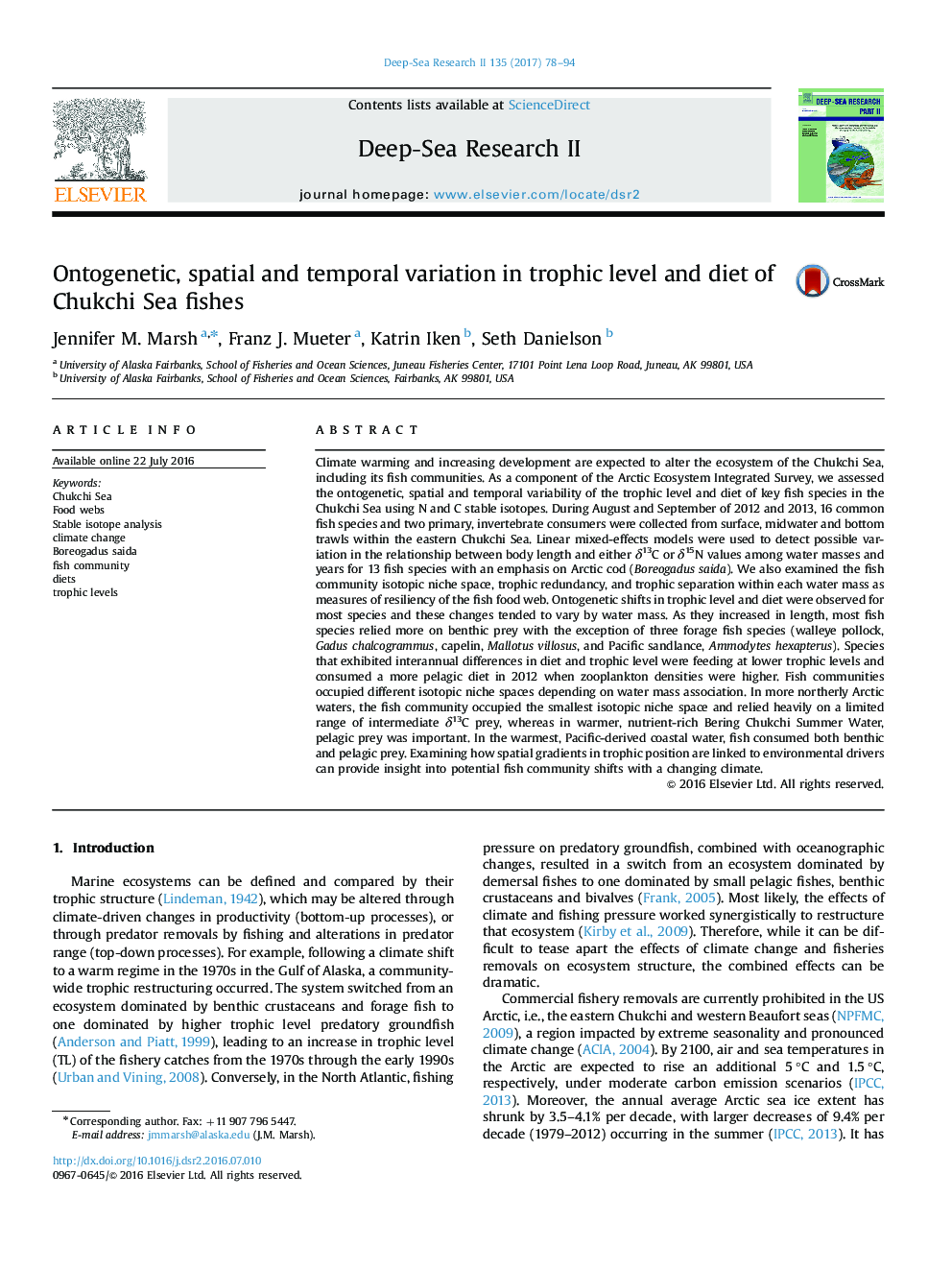| کد مقاله | کد نشریه | سال انتشار | مقاله انگلیسی | نسخه تمام متن |
|---|---|---|---|---|
| 5764905 | 1626407 | 2017 | 17 صفحه PDF | دانلود رایگان |
Climate warming and increasing development are expected to alter the ecosystem of the Chukchi Sea, including its fish communities. As a component of the Arctic Ecosystem Integrated Survey, we assessed the ontogenetic, spatial and temporal variability of the trophic level and diet of key fish species in the Chukchi Sea using N and C stable isotopes. During August and September of 2012 and 2013, 16 common fish species and two primary, invertebrate consumers were collected from surface, midwater and bottom trawls within the eastern Chukchi Sea. Linear mixed-effects models were used to detect possible variation in the relationship between body length and either δ13C or δ15N values among water masses and years for 13 fish species with an emphasis on Arctic cod (Boreogadus saida). We also examined the fish community isotopic niche space, trophic redundancy, and trophic separation within each water mass as measures of resiliency of the fish food web. Ontogenetic shifts in trophic level and diet were observed for most species and these changes tended to vary by water mass. As they increased in length, most fish species relied more on benthic prey with the exception of three forage fish species (walleye pollock, Gadus chalcogrammus, capelin, Mallotus villosus, and Pacific sandlance, Ammodytes hexapterus). Species that exhibited interannual differences in diet and trophic level were feeding at lower trophic levels and consumed a more pelagic diet in 2012 when zooplankton densities were higher. Fish communities occupied different isotopic niche spaces depending on water mass association. In more northerly Arctic waters, the fish community occupied the smallest isotopic niche space and relied heavily on a limited range of intermediate δ13C prey, whereas in warmer, nutrient-rich Bering Chukchi Summer Water, pelagic prey was important. In the warmest, Pacific-derived coastal water, fish consumed both benthic and pelagic prey. Examining how spatial gradients in trophic position are linked to environmental drivers can provide insight into potential fish community shifts with a changing climate.
Journal: Deep Sea Research Part II: Topical Studies in Oceanography - Volume 135, January 2017, Pages 78-94
